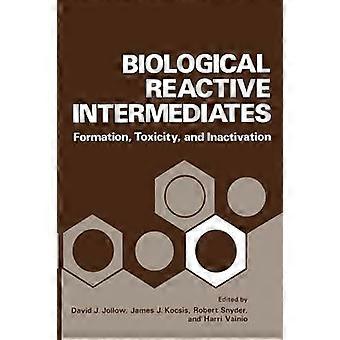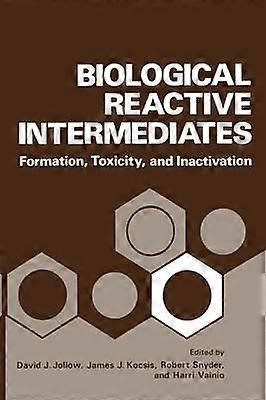Description
I. Reactive Intermediates in Toxicology and Carcinogenesis: Role of Covalent Binding. - 1. Introduction to the Concept of Reactive Intermediates. - 2. The Concept of Reactive Electrophilic Metabolites in Chemical Carcinogenesis: Recent Results with Aromatic Amines Safrole and Aflatoxin B1. - 3. Kinetics of Reactive Metabolites and Covalent Binding in Vivo and in Vitro. - 4. Biochemical Aspects of Toxic Metabolites: Formation Detoxication and Covalent Binding. - 5. Discussion. - II. Formation of Reactive Intermediates. - 6. Mechanism of Microsomal Monooxygenases and Drug Toxicity. - 7. Discussion. - 8. Aryl Hydrocarbon Hydroxylase: Induction. - 9. Discussion. - 10. Benzo [a] pyrene Metabolism: Enzymatic and Liquid Chromatographic Analysis and Application to Human Liver Lymphocytes and Monocytes. - 11. Discussion. - 12. Genetic Differences in Benzo [a] pyrene Carcinogenic Index in Vivo and in Mouse Cytochrome P1 450-Mediated Benzo [a] pyrene Metabolite Binding to DNA in Vitro. - 13. Discussion. - 14. Formation of Toxic Intermediates in Fetal Tissues. - 15. Discussion. - 16. The Possible Role of Trout Liver Aryl Hydrocarbon Hydroxylase in Activating Aromatic Polycyclic Carcinogens. - 17. Metabolic Activation of Methyldopa by Cytochrome P450-Generated Superoxide Anion. - 18. Formation of Tertiary Amine N-Oxide and Its Reduction by Rat Liver Microsomes. - III. Inactivation of Reactive Intermediates. - 19. Epoxide Hydratase: Purification to Apparent Homogeneity as a Specific Probe for the Relative Importance of Epoxides among Other Reactive Metabolites. - 20. Glutathione S-Transferases. - 21. Discussion. - 22. UDPGlucuronosyltransferase: Substrate Specificity and Reactivation after Partial Separation from Other Membrane Components. - 23. Discussion. - 24. Inactivation of Reactive Intermediates in Human Liver. - 25. Discussion. - 26. Nucleotide Pyrophosphatase as a Competitor of Drug Hydroxylation and Conjugation in Rat Liver Microsomes. - IV. Specific Reactive Intermediates. - 27. Metabolic Activation of Hydrazines to Highly Reactive Hepatotoxic Intermediates. - 28. Discussion. - 29. Activation of Nitrite. - 30. Discussion. - 31. Benzene Metabolism and Toxicity. - 32. Benzene and p-Xylene: A Comparison of Inhalation Toxicities and in Vitro Hydroxylations. - 33. Discussion. - 34. Hepatotoxicity of Carbon Disulfide and of Other Sulfur-Containing Chemicals: Possible Significance of Their Metabolism by Oxidative Desulfuration. - 35. Studies of the Formation of Reactive Intermediates of Parathion. - 36. Discussion. - 37. Metabolism and Biological Activity of Benzo [a] pyrene and Its Metabolic Products. - 38. Discussion. - 39. Polycyclic Hydrocarbon Epoxides as Active Metabolic Intermediates. - 40. Stereoselective Synthesis and Reactions of a Diol-Epoxide Derived from Benzo [a] pyrene. - 41. Discussion. - 42. Additional Routes in the Metabolism of Phenacetin. - 43. Biliary Metabolites of Paracetamol in Relation to Dose Level and Various Pretreatments. - 44. Studies on Pharmacokinetics of N-Demethyldiazepam the Active Main Metabolite of Diazepam. - V. Reactive Intermediates in Lipid Peroxidation. - 45. Regulation and Effects of Lipid Peroxidation in Isolated Hepatocytes. - 46. Discussion. - 47. New Data Supporting an Obligatory Role for Lipid Peroxidation in Carbon Tetrachloride-Induced Loss of Aminopyrine Demethylase Cytochrome P450 and Glucose-6-phosphatase. - 48. Discussion. - 49. Binding of Haloalkanes to Liver Microsomes. - 50. Discussion. - 51. Degradation of Cytochrome P450 Heme and Lipid Peroxidation in Lead-Poisoned Rats. - VI. Reactive Intermediates in Carcinogenesis. - 52. The Effects of Microsomal Enzymes on Chemical Oncogenesis in Culture. - 53. Discussion. - 54. Role of Covalent Binding in Carcinogenicity. - 55. Discussion. - 56. Interactions of Carcinogens with Human Cell DNA: Damage and Repair. - 57. Discussion. - 58. The Origin Present Status and Trends of Toxicology: A Review of the Symposium in Turku 1975. - Participants. Language: English
-
Identifiant Fruugo:
339470283-744715512
-
ISBN:
9781461341260
Livraison & retours
Expédition dans un délai de 4 jours
Expédition de Royaume-Uni.
Nous mettons tout en œuvre pour que les produits que vous commandez vous soient livrés dans leur intégralité et selon vos indications. Néanmoins, si vous recevez une commande incomplète, des articles différents de ceux commandés ou si, pour toute autre raison, la commande ne vous satisfait pas, vous pouvez retourner la commande ou tout produit inclus dans celle-ci et recevoir un remboursement complet des articles. Voir l'intégralité de la politique de retour

